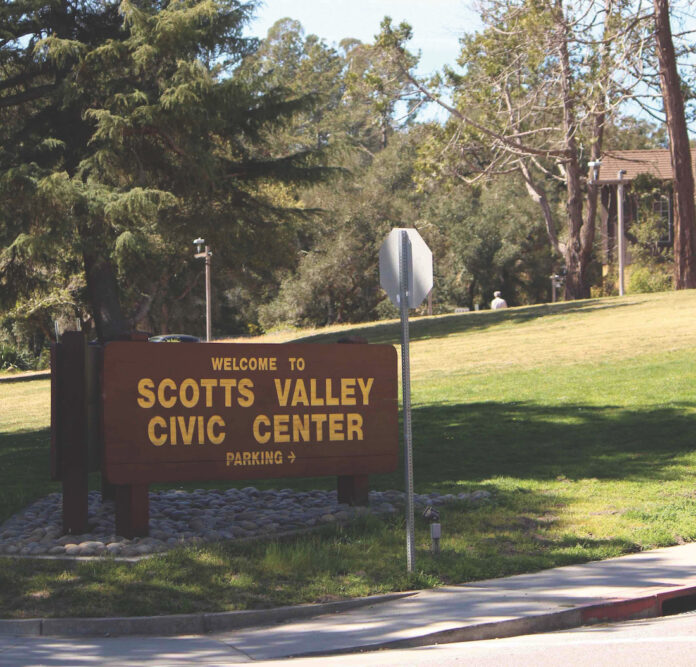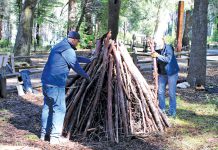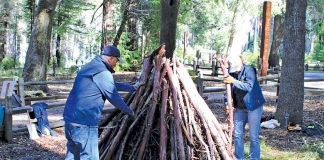Once the dust had settled on April 13 after wrangling between Monterey Bay-area municipalities, the reality of what Scotts Valley must do to help California address its chronic housing shortage came into focus.
During the upcoming eight-year Regional Housing Needs Allocation cycle, Scotts Valley will be required to plan for 1,220 new residential units. About 800 of these will need to be affordable to people of lower-income categories.
“We were originally told our number was going to be around 600, and it went to 1,200,” said City Councilmember Derek Timm, describing the back-and-forth between Association of Monterey Bay Area Governments (AMBAG) officials. “The voices in our county were dwarfed by the number of votes in Monterey County and San Benito County.”
The decision sets the stage for crane installation, rebar deliveries and cement trucks across the region—which had to divide up a 33,274-unit requirement between Santa Cruz and Monterey counties. That’s up from 10,043 during the last cycle.
Timm says he’s frustrated because San Benito County was able to vote on this decision, even though it doesn’t have to accept any of the housing. Scotts Valley joined Capitola and Santa Cruz in opposing the final numbers.
“We didn’t have much of a vote in that process,” he said. “I felt like our jurisdictions were allocated a disproportionate share.”
After all, the city only has one person in its planning department, he noted.
“We have one person in our planning department and we’re trying to hire another—which is very difficult,” he said.
Timm says he’s looking at the new figure in terms of the approximately 4,600 total units Scotts Valley has created in its history.
“The idea that we could … increase our city’s overall build by 25% … it’s an unrealistic goal that we’re being saddled with,” he said, adding the requirement doesn’t come with government funding to make things easier. “The state is saying, ‘Go create about 800 affordable units, but, good luck.’”
Scotts Valley isn’t planning on appealing the decision, he said.
Mayor Donna Lind said she was “shocked” when the final numbers were released.
“We expected it to go up, but nothing like we heard,” she said, adding there are consequences if Scotts Valley doesn’t follow the program. “You can subject your city to lawsuits and loss of funding from the state.”
While the city’s allotment is less than 4% of the total housing area municipalities must plan for in the coming years, Lind says it’s still a big ask for a community like Scotts Valley.
“This is taking us to a level that is requiring us to rezone,” she said. “Will this even really address the housing costs?”
Over the last three-plus decades, Habitat for Humanity Monterey Bay has managed to build about 60 affordable homes across the region.
When asked about Scotts Valley’s new RHNA allotment, CEO Satish Rishi said he appreciates how big of a challenge the city has in front of it.
“That’s a tall order,” he said, of the 100-affordable-units-a-year on Scotts Valley’s plate. “It’s definitely possible.”
The new housing requirements are the fault of some local governments, which haven’t been doing their part to add to the housing stock, he noted.
“If you were a community where you ignored building affordable housing … now it’s catching up to you,” he said, adding he’s not necessarily referring to Scotts Valley. “You have to do your share now.”
Habitat for Humanity is in the process of completing an 11-unit project in Live Oak and will welcome its next two families into a couple of units near the Harper Street and Chanticleer Avenue intersection, Saturday.
The nonprofit broke ground on three Scotts Valley townhouses in 2011, which were completed a couple of years later.
“We used about 16,000 volunteer hours to build these three homes,” he said. “They’re very nice homes.”
Now, one of those families is moving to Texas, so the organization is seeking a new one to take over the Blake Lane four-bedroom.
“We are looking for a family that lives and works in Scotts Valley,” he said of the unique opportunity for a family of three or four. “Of the Habitat homes that I’ve seen, it’s probably one of the nicest.”
Rishi says, in light of the affordability push from the state, the local Habitat for Humanity chapter has been trying to build about five times as many units annually as in the past.
“We would love to have a bigger impact,” he said, adding a partnership with Scotts Valley would take a serious bite out of the new affordability task the sleepy community finds intimidating. “We would need to get some land and some help from the city, but that’s something where we could do our part in the next eight years to build maybe 20 or 30 homes.”










